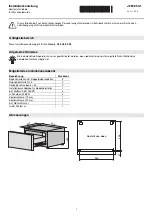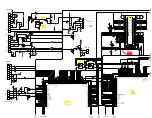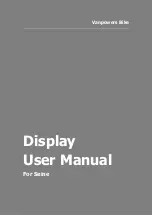
COROS™ Wearables Inc.
No. 1844 GRAHAM LANE, SANTA CLARA, CA 95050, USA
For updated product and mobile app information, please visit
www.coros.com
Contact
FCC Statement
Maintenance
1. Keep the helmet far away from high temperatures over
65.5C or 149.9F, as it may cause damage to the helmet. Do
not keep the helmet inside your car for long periods of time or
store it in tightly sealed containers or bags where high heat
can accumulate and cause damage to the helmet. Do not use
the helmet if it has been deformed by heat.
2. Make sure the helmet is clean and dry after each use. Store
the helmet in a dry and ventilated location.
Storage
Clean the helmet with mild soapy water. Avoid use of specific
solvents such as ammonia, bleach, paints, abrasives or
hydrocarbons which may damage the helmet and cause it to fail
to protect the head in the accident.
18
- English
English-
19
passed EN1078:2012+A1:2012 to show conformity to the EHSR
of Regulation (EU) 2016/425
EU Type examination conducted by SGS United Kingdom Ltd,
Weston-super-Mare, BS22 6WA, UK. Notified Body No: 0120
DOC internet address is www.coros.com
The helmet can only protect if it fits well and that the buyer should
try different sizes and choose the size which feels secure and
comfortable on the head;
This helmet is designed to protect impact caused by the collision
of the head with an obstacle while cycling or roller skating, it has
This equipment has been tested and found to comply with the
limits for a Class B digital device, pursuant to Part 15 of the FCC
Rules. These limits are designed to provide reasonable
protection against harmful interference in a residential installa-
tion. This equipment generates uses and can radiate radio
frequency energy and, if not installed and used in accordance
with the instructions, may cause harmful interference to radio
communications. However, there is no guarantee that interfer-
ence will not occur in a particular installation. If this equipment
does cause harmful interference to radio or television reception,
which can be determined by turning the equipment off and on,
the user is encouraged to try to correct the interference by one or
more of the following measures:
-- Reorient or relocate the receiving antenna.
-- Increase the separation between the equipment and receiver.
-- Connect the equipment into an outlet on a circuit different from
that to which the receiver is connected.
-- Consult the dealer or an experienced radio/TV technician for
help.
Changes or modifications not expressly approved by the party
responsible for compliance could void the user's authority to
operate the equipment.





























